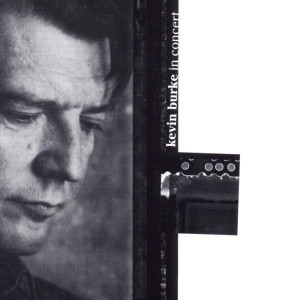 No’am Newman wrote this review.
No’am Newman wrote this review.
This recording was made over the course of two evenings shortly before Christmas 1998 in Portland, Oregon, which is where the London-born Sligo-style fiddler Burke has lived for the past twenty years. Although Burke has recorded several albums with various line-ups, this is his first solo album since Open House, which was released in 1992. It contains twelve instrumental tracks, although there are actually something like twenty-five tunes contained within, since most of the tracks are medleys.
Although I do like violin music (Dave Swarbrick, Ric Sanders and Eliza Carthy immediately spring to mind) and I do like Irish music, I am not too comfortable with solo Irish violin music; a little goes a long way. My interest rises a notch when guitarist Aiden Brennan joins in on the medley of “Up Sligo/The Rollicking Boys Around Tandaragee/Out With The Boys,” providing a restrained but interesting harmony. Brennan adds another dimension to the music, which makes it come more alive. He is featured on another two tracks, “The Mountain Road/Doctor Gilbert/McFadden’s Handsome Daughter,” and “Lucy Campbell/The Jolly Tinker.” On this latter track, Burke and Brennan are joined by another fiddler, Martin Hayes, who plays alongside Burke on two other medleys. Burke notes in his informative sleeve notes that he learnt the tune of “Sean Ryan’s Jigs” (track nine) from the recording made by Irish fiddler P. J. Hayes, who is the father of Martin Hayes. Unfortunately, Hayes and Burke play the tunes in unison, which negates the point of two people playing together.
One intriguing diversion from Irish music comes in the form of “Itzikel,” which is a Yiddish dance tune (the title is a diminutive form of the name “Itzchak,” or “Isaac”). Theoretically this tune should appeal to me for ethnic reasons (I am Jewish and live in Israel), but as it happens, I found it to be the weakest tune of the album, repetitive without embellishment. I don’t know how much this is due to the tune itself (which I don’t know), and how much is due to Burke’s arrangement. In the sleeve notes, he describes it as a “beautiful piece,” but I beg to differ. Maybe the tune’s intervals and accents seem exotic and thus beautiful to Burke, whereas to me they’re commonplace – and Irish music sometimes seems exotic!
There are several tunes which are familiar in one form or another. Fairport Convention used to play (circa 1970) the medley of “Bonnie Kate/Jenny’s Chickens,” and one can almost hear the rhythm section locking into place behind Burke’s playing. Similarly, “The Bank Of Ireland” (here played along with “Walsh’s Hornpipe” and “The Old Torn Petticoat”) used to be played by Steeleye Span.
Burke’s playing is fluid, with a clean, acoustic tone. Although the concert took place in a fairly small hall, the Artichoke Music’s concert room, there is no reverb to be heard on the recording, which makes it sound as if it were recorded in a studio with applause dubbed on afterwards (not that this particularly distracts from the playing).
To sum up (and to quote the car magazines): your mileage may vary.
(Green Linnet, 1999)
